Film is a visual language. A good filmmaker gives the audience just the right amount of information to lead them to the next scene. You don’t want your audience to get ahead of you. If they do, you risk boring the audience.
EXAMPLE: After the birds were stolen in the movie RIO, they are kept in the smugglers lair. By the time Linda and Tulio find out where the birds are, the audience is ahead of them because they've seen them escape. Now the ride to the smugglers lair is devoid of suspense because we already know what they will find.

A possible fix to this would be have the birds intersect the heroes path on the way, making the audience think they will cross, but at each intersection hide them from each others view. You are then building suspense and entertaining the audience along the way distracting them from what they know will happen. You could also give the heroes new information diverting them from their inevitable destination and sending them and the audience down a new path.
It is impossible to stop an audience from making predictions. In fact, you want them to. A good filmmaker will lead and audience to a certain point, get them to believe a certain event will happen, and then pull the rug out from under them. To delight an audience, don’t just give them what they expect, SURPRISE THEM!
EXAMPLE: In Ratatouille, when Linguini tells the kitchen staff that the rat is doing the cooking, animated movie after animated movie tells us that the staff will let out a sigh of relief and get behind Linguini and the rat and the day is saved. You are expecting that, instead something realistic happens, they don’t believe him and walk out. That was an awesome moment. The hero has been thrown under the bus and you are excited to watch the rest of the movie.
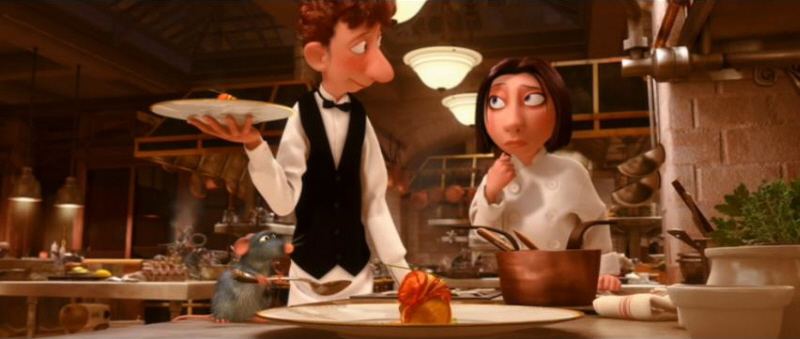
Don’t spoon feed your audience. That means don’t spell everything out for the audience. Let the story unfold and give them something to figure out. Your audience is smart! They've got a hundred plus years of cinema behind them and know the rules. The average 5 year old watches 32 hours of TV a week! On second thought, if your audience is watching that much TV maybe they are dumb. You still shouldn't treat them that way.
EXAMPLE: In Shrek the Third, the villains put on a ‘bad’ play to explain how they are going to take over the kingdom, only problem is, it IS a bad play and I got bored. The only reason I kept watching was because Blue Sky wanted us to watch it in case there was something similar to Ice Age III (which we were then making) so we could change it.
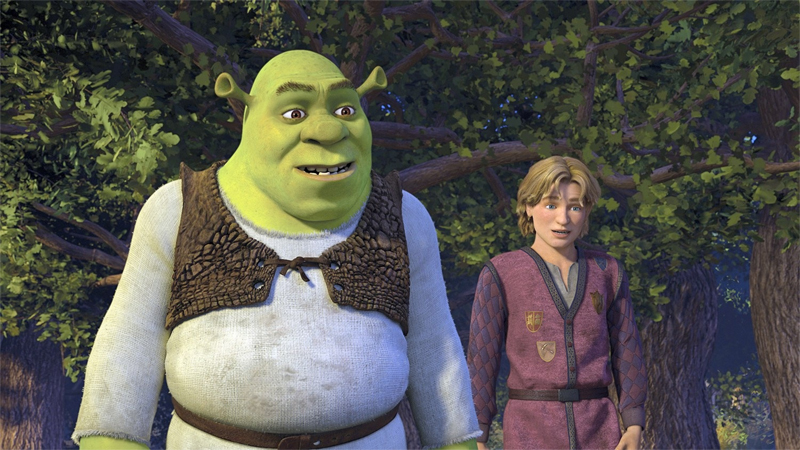
Show, don’t tell. The climax of Shrek the Third, has the villains gathered to kill the heroes and take the kingdom, then Arthur gives a speech and they all drop their weapons. WHAT?!!! In the words of Syndrome, “LAME! LAME! LAME!” Never tell your audience what you can show them. SHOW us that, as Artie says, "just because people treat you like a loser doesn't mean you are one". How to Train Your Dragon SHOWED us this.
Another example, In Ice Age three, Momma Dino hears the far off growl of Rudy, the bad t-rex, gathers her kids and heads for safety. Sid says, “You’re the biggest thing on earth! What are you afraid of?” Ughh. Better would be to show that Sid gets scared after taking a cue from Momma Dino’s reaction. Were going see Rudy in a minute anyway. Let your audience figure things out for themselves.
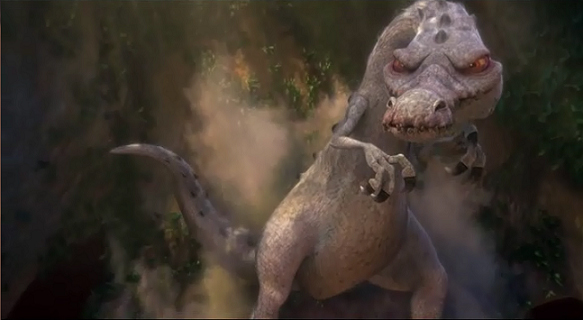
Shoe Leather. This term refers to the parts of a movie that open up action to establish continuity, and show the viewer how a character gets from point a to point b. If character A sends character B to deliver a message to character C. Shoe leather would be showing character B traveling to character C. It is also showing a character walking across the room to talk to another or to pick something up -- the pedestrian moments of your movie. When possible, get to the point. Only show shoe leather when it is important to the story.
Shoe Leather
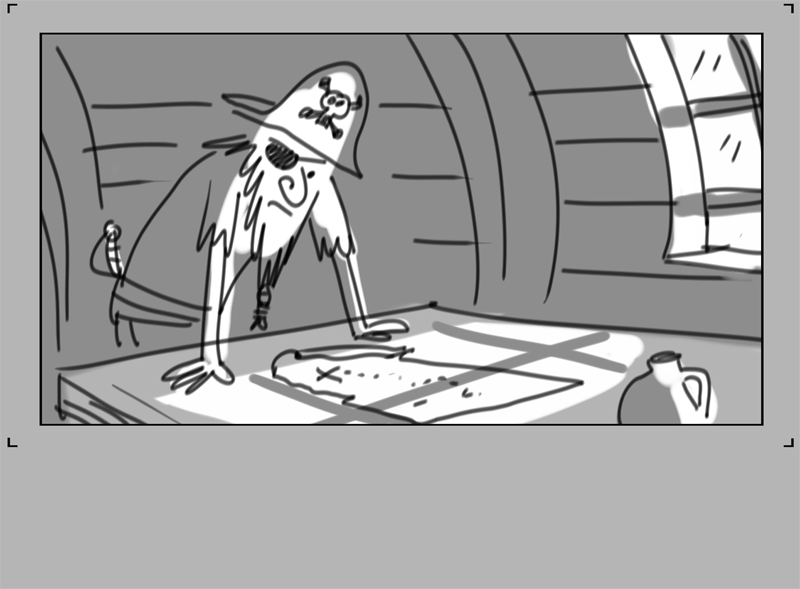
We really don't need to see how the pirate gets to the island. It was established that the island was close.
No Shoe Leather
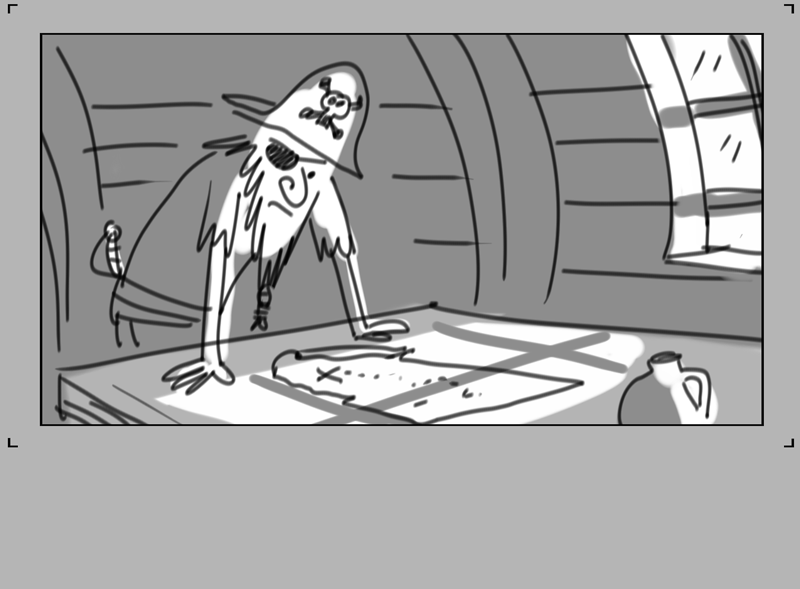
I cut out the traveling stuff and it plays much better. If there was some action we needed to see, like the pirate getting eaten by a shark or another pirate getting there before him, then the action wouldn't be shoe leather.·It would serve a purpose and we could use it.
One studio I worked for loved to hand out a storyboard test where a boy scout had to help a granny get her cat. 90% of the applicants had the scout needing a "helping" merit badge and put the cat in a tree. We already knew what was coming. The more successful test were the ones where the artist surprised us. One of the more memorable ones was granny as a warden of a cat prison. The cats prison cells were trees. The scout was trying to break his cat out of jail. It was good.
Board a prison escape. Surprise your audience. Don't let them get ahead of you and surprise them! Don't give them what they are expecting.
Remember: Show, don't say. Eliminate shoe leather. Think about who is in prison? Why do they want out? What kind of prison is it?